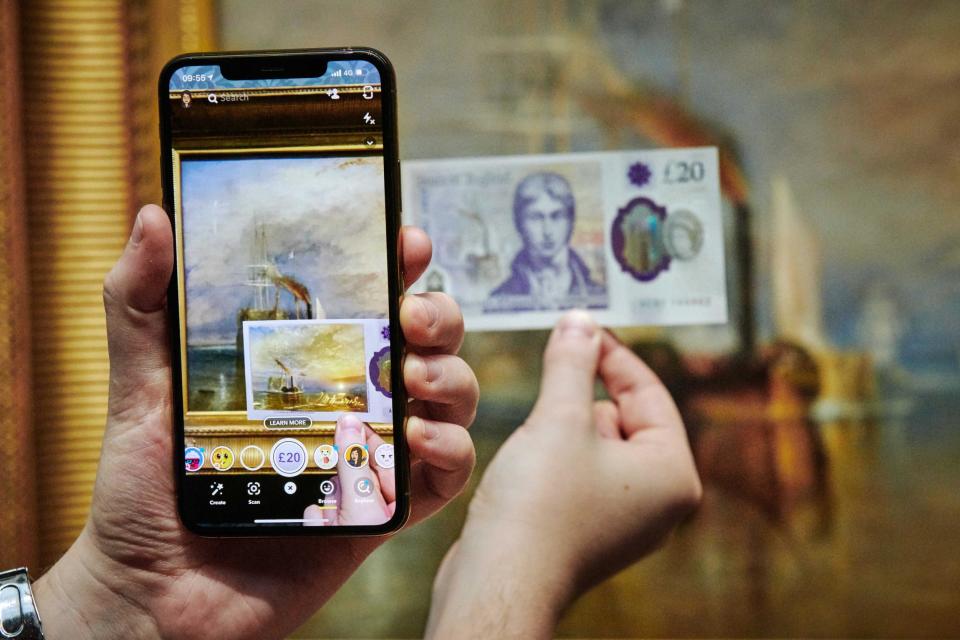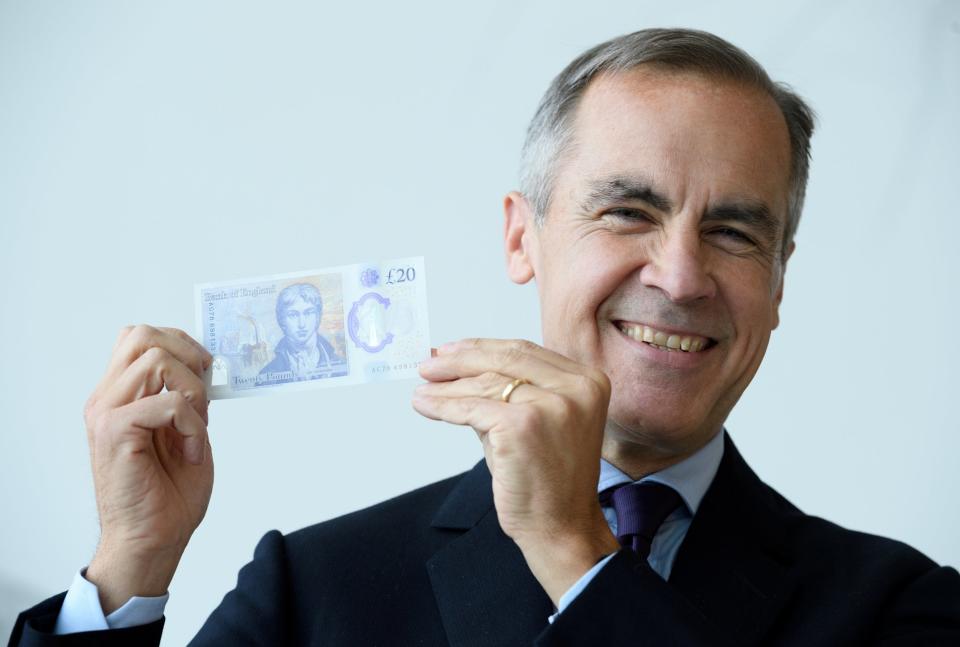How to get the new £20 banknote as the polymer notes come into circulation
A new polymer £20 banknote featuring the artists JMW Turner has entered circulation.
The new note marks the Bank of England's most secure note to date, with a design that is very difficult to counterfeit.

The note will start appearing in ATMs and tills around the country from Thursday, February 20, 2020.
It comes as the latest polymer note in the Pound Sterling currency, following the release of the Winston Churchill £5 and the Jane Austen £10 in 2016 and 2017, respectively.

How to get the new £20 note
The new note will start appearing in ATMs and tills throughout the country on Thursday (February 20), the Bank of England has announced.
It expects half of all ATMs in the UK to be dispensing polymer £20s within the first fortnight of their release.
If you find a shiney new note with two see-through windows, two colour foil and a man in clothes from the Georgian era, you've found yourself one of the new £20s.
To bring the new note to life, the Bank has worked with Snapchat to develop a lens which allows the public to see their cash in a new dimension through augmented reality.

How long can I use the old £20 notes for?
People can carry on spending the current paper £20 notes, featuring the economist Adam Smith.
The Bank of England have said that notice will be given six months ahead of legal tender status of the paper £20 being withdrawn.
Even after legal tender status is withdrawn, many banks will continue to accept deposits of the old £20 note.
You will also be able to exchange old £20 notes for new ones with the Bank of England directly.
There are over 2 billion £20 notes in circulation so replacing them will be a very gradual process.

What will the new £20 note look like?
The new note will include two see-through windows and a two colour foil which make it very difficult to counterfeit.
It will aslo be the first to feature the signature of Sarah John, the Bank of England’s current Chief Cashier.
Ms John said: “Moving the £20 note to polymer marks a major step forward in our fight against counterfeiting.
"I am very grateful to everyone across the cash industry who has made this transition possible and I hope the public enjoy using their new Turner £20s.”
Features on the new £20 note include:
A large see-through window with a blue and gold foil on the front depicting Margate lighthouse and Turner Contemporary.
The foil is silver on the back. The shape of the large window is based on the shape of the fountains in Trafalgar Square.
A smaller see-through window in the bottom corner of the note, inspired by Tintern Abbey.
JMW Turner’s self-portrait, painted c.1799 and currently on display in Tate Britain.
One of Turner’s most eminent paintings The Fighting Temeraire; a tribute to the ship HMS Temeraire which played a distinguished role in Nelson’s victory at the Battle of Trafalgar in 1805.
A metallic hologram which changes between the word ‘Twenty’ and ‘Pounds’ when the note is tilted.
The Queen’s portrait in the see-through window with ‘£20 Bank of England’ printed twice around the edge.
A silver foil patch with a 3D image of the coronation crown.
A purple foil patch containing the letter ‘T’ and based on the staircase at Tate Britain.
A quote “Light is therefore colour” from an 1818 lecture by Turner referring to the innovative use of light, shade, colour and tone in his pictures.
Turner’s signature from his Will, the document with which he bequeathed many of his paintings to the nation.
Laid end to end, 2 billion polymer £20 notes would stretch around the world almost 7 times and weigh a total of 1,780 tonnes – that’s over 141 double decker buses.
Who is JMW Turner on the £20 note and why is he on the note?
Joseph Mallord William Turner was an artist born in Covent Garden on April 23, 1775.
As a young boy Turner was sent to live with his uncle in Brentford, which was then a small town on the River Thames, and it was there where he produced his first works in the shape of a series of colourings of engraved plates.
In 1786 the budding artist was sent to live in Margate, Kent, where he developed his talents further as he drew landscapses of the town and surrounding countryside.

A child prodigy, his father would exhibit these drawings in his shop in London and sell them for a few shillings.
When he was 15, Turner became a member of the prestigious Royal Academy of Art and his first watercolour was accepted for the academy's 1790's summer exhibition.
He continued to produce a vast amount of work, and would go on to exhibit a watercolour every year at the academy before he showed his first oil painting, Fishermen at Sea, in 1796.
Throughout his life, Turner produced more than 550 oil paintings, 2,000 watercolours, and 30,000 sketches and drawings.
His legacy continues today with the Turner Prize contested by British artists since 1984 and the Turner Contemporary gallery in Margate, which displays a wide range of modern art influenced by the artist.
His artworks are still lauded to this day, with many considering him to be the greatest ever 19th century British artist.

Speaking at Tate Britain, which houses the Turner Bequest, Governor Mark Carney said: “Turner’s art was transformative. I am delighted that the work of arguably the single most influential British artist of all time will now appear on another 2 billion works of art – the new £20 notes that people can start using today.”
Turner’s self-portrait, as featured on the new £20 note, is currently on display at Tate Britain alongside the banknote.
What is Polymer and are the bank notes vegan?
The note has sparked controversy, with vegan groups denouncing the use of animal by-products in its creation.
The controversial bank notes contain tallow, an animal by-product.
They are made from polymer, another name for plastic, instead of paper. This said to improve their durability and to help prevent forgery.
Polymer is a class of natural or synthetic substances composed of very large molecules. They make up many of the materials in living organisms, including proteins, cellulose, and nucleic acids.
Tallow is a rendered form of beef or mutton fat. Each note contains less than 0.05 per cent animal fat.
The contentious substance is used to keep the note lubricated inside your wallet.This gives the note anti-static and anti-slip properties.
Without tallow Polymer notes can create static electricity problems as they go through a counting machine.
This can cause notes to stick together and lead to counting errors.
Read more
Who is JMW Turner? The lowdown on the artist appearing on the new £20

 Yahoo News
Yahoo News 